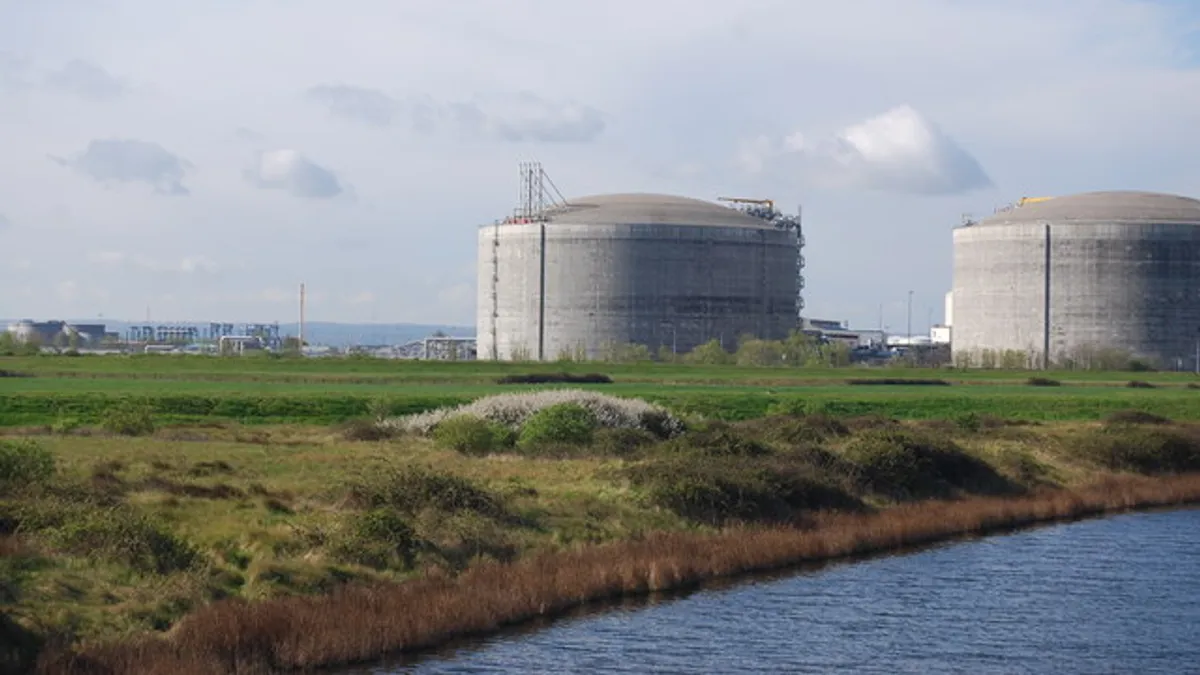Dive Brief:
- National Grid, a U.K.-owned electric and gas utility, announced on Thursday a pledge to reach net zero emissions by 2050, compared to 1990 levels. The announcement has created new buzz around hydrogen energy, said to be the "lynchpin" between the company's gas and electric networks, according to a spokesperson.
- National Grid's Net Zero by 2050 plan involves cutting scope 3 emissions — the emissions from the fuels and electricity it provides — 20% by 2030. The utility will target 80% cuts to scope 1 (direct operations) and scope 2 (power purchases) emissions by 2030.
- A number of utilities have pledged in recent weeks to accelerate climate action plans and to cut carbon emissions and achieve net zero emissions by 2050, including Ameren, a utility that owns a large amount of coal. The Electric Power Research Institute (EPRI) has celebrated the announcements, in particular their inclusion of energy efficiency and the use of alternative fuels.
Dive Insight:
National Grid's decarbonization efforts have been underway in the U.S. but the long-term goal has no bearing on recent activity, such as a request to increase rates for its upstate customers in New York an average of 4% for electricity customers starting July 2021.
"The recent announcement does not have a direct impact on the proposed rates for customers we filed in upstate New York," National Grid spokesperson Kevin O'Shea said in an email.
The New York rate case does include initiatives that the utility is pursuing to lower emissions, including electric vehicle charging infrastructure investments, smart meter deployment, "unprecedented investment" in energy efficiency and demand response programs, and energy storage solutions, he said. The rate case includes an initiative to integrate renewable energy into the New York utility's gas network, according to O'Shea.
Hydrogen will be playing a major role in the future, O'Shea said echoing contributed content from National Grid that was published on Thursday.
"Production of hydrogen from renewable electricity is the lynchpin that sits between the two networks, and in the coming years, we will lay the foundation for hydrogen by continuing studies and pilots, focusing on producing and blending it into our existing gas network, and developing a transition plan that will lay out the changes required in the existing gas infrastructure," O'Shea said.
The utility is participating in a hydrogen blending study with the New York State Energy Research and Development Authority and the Stony Brook Institute to explore the use of National Grid's gas infrastructure to integrate and store renewable hydrogen.
The Net Zero by 2050 Plan addresses hydrogen, along with a suite of clean energy technology, such as offshore wind.
National Grid's announcement follows Ameren and Entergy's own 2050 goals. According to EPRI, Dominion Energy, Duke Energy, Southern Company, Xcel Energy, Public Service Enterprise Group, DTE Energy and WEC Energy Group all pledged to reduce utility operations emissions to net-zero by 2050.
"All of these utilities that have pledged to reduce emissions to net-zero by 2050 have sent a message to our industry that we need to continue our efforts to advance technologies and alternative fuels that will underpin our environmental and sustainability efforts," EPRI President Arshad Mansoor said in a statement.














